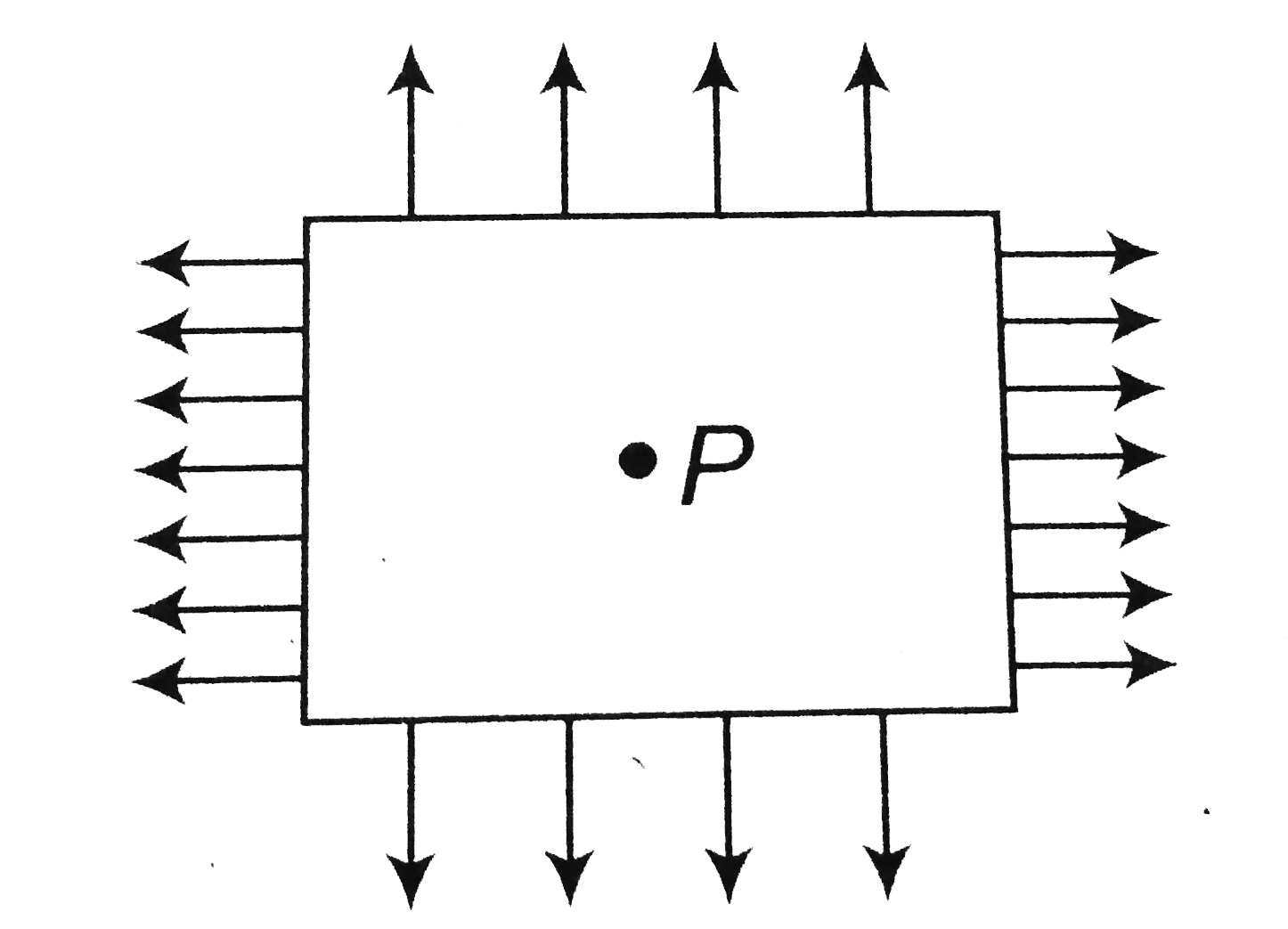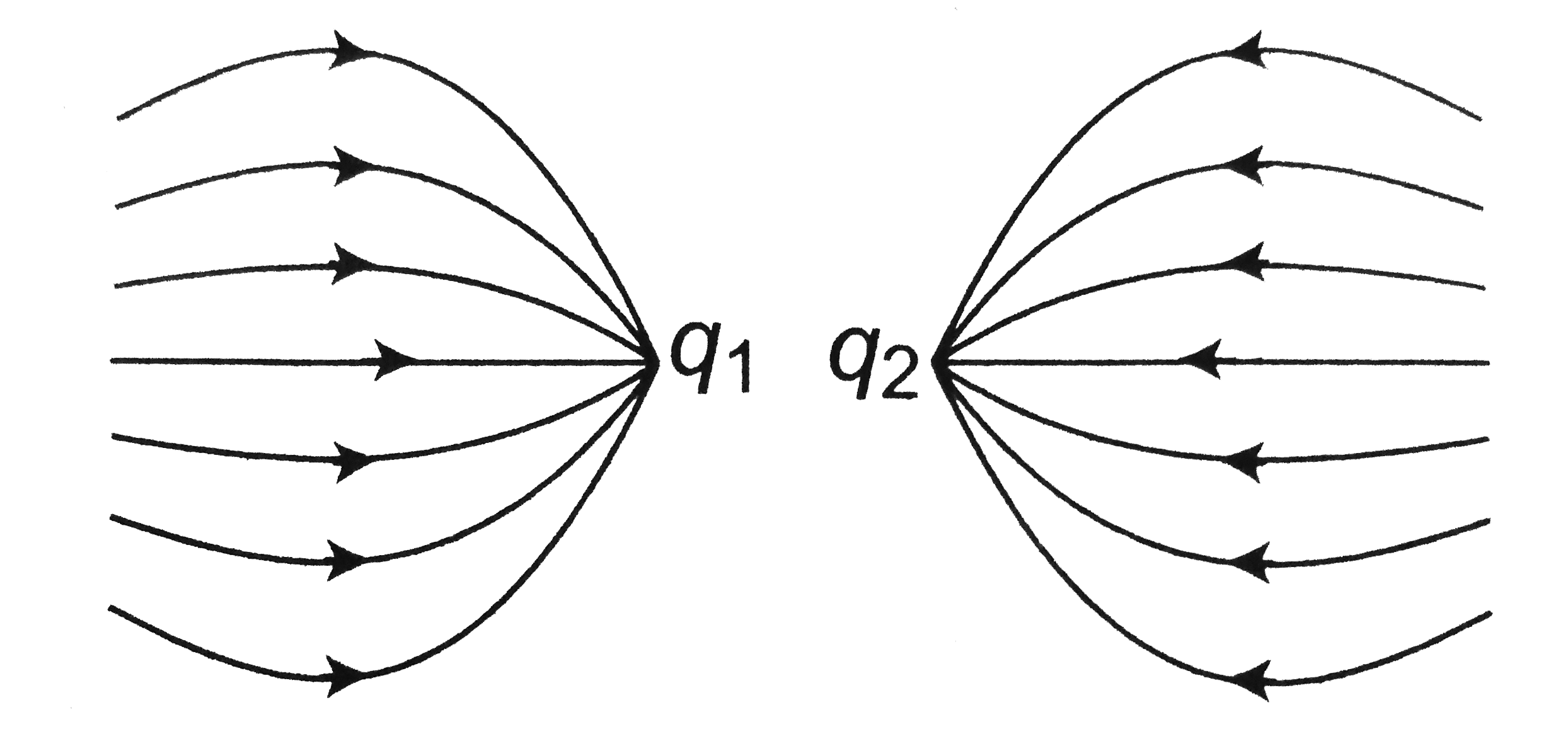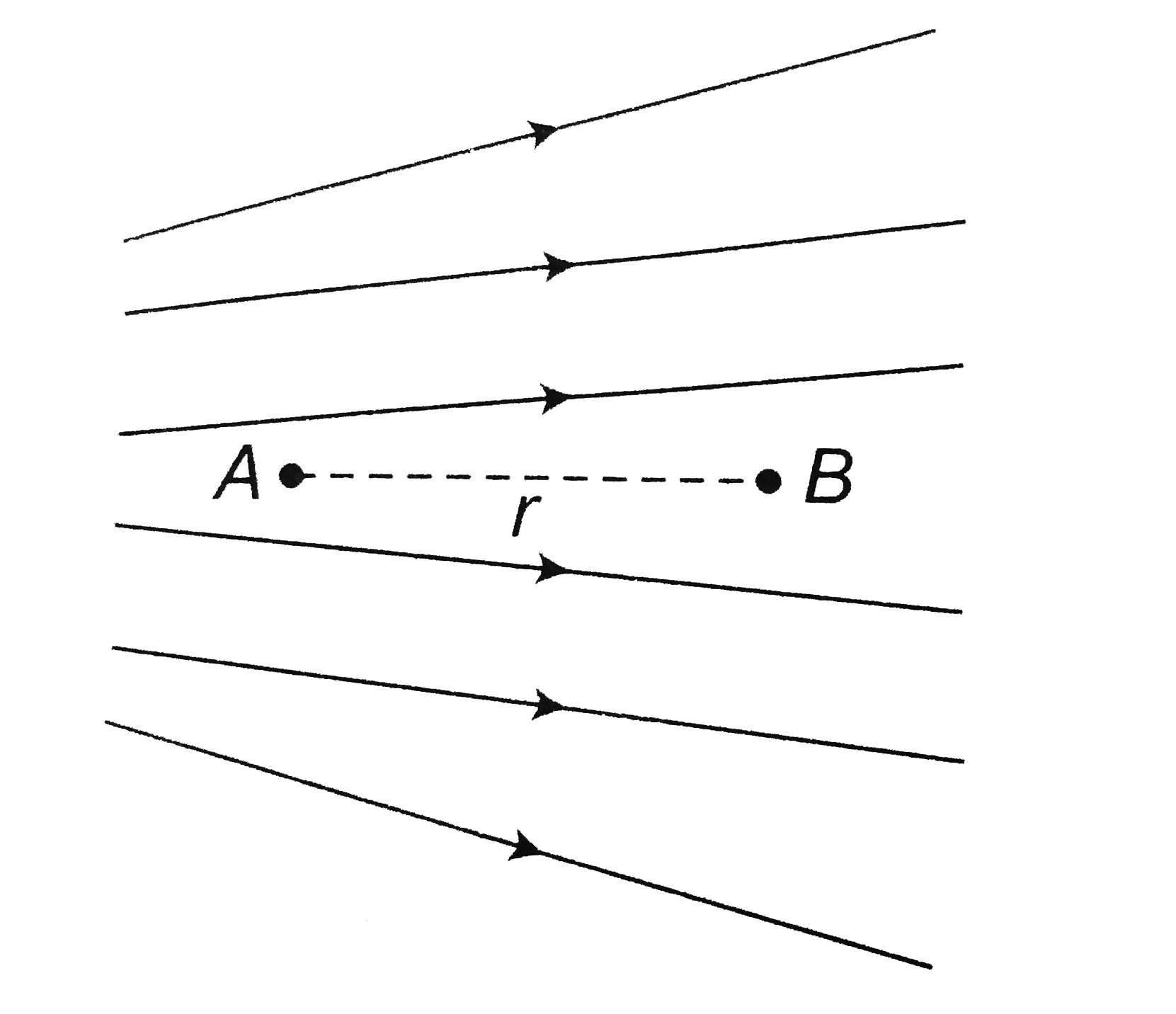Electric lines of force about negative point charge are
Circular, anticlockwise
Circular, clockwise
Radial, inwards
Radial , outwards
The correct Answer is:3
To solve the question regarding the electric lines of force around a negative point charge, we can follow these steps:
1. Understand the Concept of Electric Field Lines: Electric field lines represent the direction of the electric field created by a charge. They indicate how a positive test charge would move in the presence of the electric field.
2. Identify the Nature of the Charge: In this case, we are dealing with a negative point charge. The behavior of electric field lines is different for positive and negative charges.
3. Direction of Electric Field Lines for Negative Charge: Electric field lines for a negative charge point inwards. This means that if we place a positive test charge in the vicinity of a negative charge, the positive charge will be attracted towards the negative charge.
4. Visualize the Electric Field Lines: If you were to draw the electric field lines around a negative point charge, they would start from infinity and converge towards the negative charge. This indicates that the field lines are directed radially inwards.
5. Conclusion: Based on the behavior of the electric field lines around a negative charge, we conclude that the electric lines of force about a negative point charge are directed radially inwards.
Final Answer:
The electric lines of force about a negative point charge are radially inwards (Option 3).
---
The electric lines of force about a negative point charge are radially inwards (Option 3).
Topper's Solved these Questions
- ELECTRIC CHARGES AND FIELDS BOOK - AAKASH INSTITUTE ENGLISHCHAPTER - ELECTRIC CHARGES AND FIELDS EXERCISE - SECTION-B(OBJECTIVE TYPE QUESTION( ONLY ONE ANSWER)
12 Videos
- ELECTRIC CHARGES AND FIELDS BOOK - AAKASH INSTITUTE ENGLISHCHAPTER - ELECTRIC CHARGES AND FIELDS EXERCISE - SECTION-C ( OBJECECTIVE TYPE QUESTIONS)
2 Videos
- ELECTRIC CHARGES AND FIELDS BOOK - AAKASH INSTITUTE ENGLISHCHAPTER - ELECTRIC CHARGES AND FIELDS EXERCISE - TRY YOURSELF
33 Videos
- DUAL NATURE OF RADIATION AND MATTER BOOK - AAKASH INSTITUTE ENGLISHCHAPTER - DUAL NATURE OF RADIATION AND MATTER EXERCISE - ASSIGNMENT (SECTION-D)
10 Videos
- ELECTROMAGNETIC INDUCTIONBOOK - AAKASH INSTITUTE ENGLISHCHAPTER - ELECTROMAGNETIC INDUCTIONEXERCISE - ASSIGNMENT(SECTION -D) Assertion-Reason type Question)
15 Videos
Similar Questions
(A ): A charged particle free to move in an electric field always move along an electric line of force.
(R ): The electric line of force diverge from a positive charge and converge at a negative charge.
View SolutionThe number of electric lines of force originating from a charge of 1C is
View SolutionElectric lines of force are as shown in the figure. Then potential at point P

View SolutionAssertion: Basic difference between an electric line and magnetic line of force is that former is discontinuous and the latter is continuous or endless.
Reason: No electric lines of force exist inside a charged body but magnetic lines do exist inside a magnet.
View SolutionA: The magnetic field lines also represent the lines of force on a moving charged particle at every point.
R: Force on a moving charge acts parallel to the magnetic field.
View Solution
the total flux of electric lines of forces of a charge q placed at the mid point of the dge of a side of rectangular box, as shown in figure through the box is
View SolutionFigure shows electric lines of forces due to charges Q1 and Q2 Henice


View SolutionFigure shows the electric lines of force emerging from a charged body. If the electric field atA and B are EA and EB respectively and if the displacement between A and B is r then

View SolutionFigure shows the electric lines of force emerging from a charged body. If the electric field atA and B are EA and EB respectively and if the displacement between A and B is r then

View SolutionThe figure shows the electric lines of force emerging from a charged body. If the electric fields at A and EA and EB respectively and if the the distance between A anf B is r, then

View Solution
